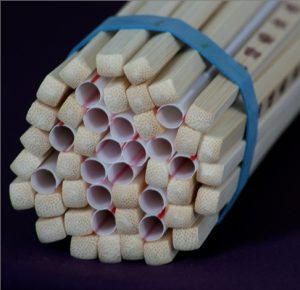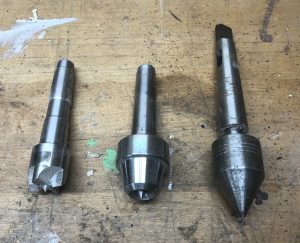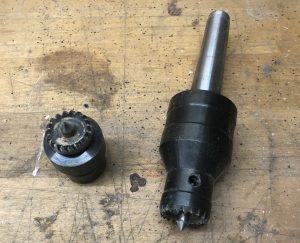Introduction – the basic science of cutting wood!
In this article, I’ll cover some of the science fundamentals of turning wood because this affects the why and how of the interaction with the timber we turn, whether cutting, sanding or applying stains and finishes.
Timber – the biology
Any piece of wood is made up of fibres, which are actually minute tubes usually arranged in a bundle, running lengthwise up and down trunks and branches. Let’s illustrate that with a bundle of straws and chopsticks!

I am not going to discuss the biology in this article ( that can be found here), more the effects we need to be aware of, so we can use them to our advantage, or avoid them causing issues as we create our masterpiece! For now, think of the chopsticks as structural strands in the bundle, and the straws as tubes, that move nutrients through the wood. The important point is the bundle strands are all orientated in one direction. The exception to this arrangement is burr or burl wood where the fibres are random and have no uniform direction. This both gives this type of timber its beauty but also makes it harder to turn.
Spindle Turning
In spindle turning the piece of wood has its fibres aligned with the lathe bed and is usually turned between centres. Traditionally a 2 or 4 prong drive centre is used at the head-stock and a cone centre in the tail-stock. The tool approaches the spindle and is run along its length on the tool-rest effectively planing shavings off the spindle as the tool traverses the spindle. The tools can be spindle gouges or a skew chisel. The skew, in skilled hands, can produce a near perfect finish off the tool, including beads and coves.
These days, many turners prefer alternative centres which don’t penetrate the straw bundle of fibres, as they are designed to spread the load across more fibres ends. These centres include the ring centre and the steb centre.
Bowl Turning
In bowl turning the piece of wood is effectively held at right angles to the lathe bed, meaning the fibres rotate in opposition to the lathe bed. The means for two quarter turns the fibres are aligned with the tool cutting edge and “plane”, and two quarters the end grain is offered so the cut is across the bundle of tubes. For this reason, there can be greater forces involved. so the wood is held firmly to a face-plate or in a chuck. The bowl gouge is also more substantial in construction and generally longer so the turner has more leverage to control the tool.
Rubbing the bevel
The phrase “Rubbing the bevel” is common parlance with woodturners for good reason. The concept is the smoothly polished steel shoulder behind the cutting edge rubs against the timber and doesn’t cut until the handle is lifted very slightly until the front edge starts to cut. The same is true of gouges and skews, but the technique is different.
Sanding
Sanding usually involves working through the grit range, typically 80 > 120 > 180 > 240 > 320 > 400 and sometimes on to 600 > 800. Again remember the fibre tube orientation, the advice in traditional woodworking is to sand with the grain, that is, along with the tubes. That is harder in wood-turning. With spindles, some sanding with the grain can help remove marks or raised grain. With bowls, you have end and cross grain presented to the grit alternately as the bowl turns. The raised grain is usually the end grain showing itself as you sand. Some lathe’s offer a reversing facility, thus allowing you to sand the tubes from two directions which can aid getting a smoother finish, by severing the raised fibre ends.
As you get to the end of your sanding regime, a sanding sealer is often applied which can be shellac based and may also contain solids (often talc!). The idea is to bind surface fibres and fill minute holes, that is, the tube ends of the vascular bundle from the end grain.
Staining and Colouring
With staining and colouring regardless of whether spirit (Chestnut) or water-based (Intrinsic Colours) products are being used, the tubes come in to play again. In this case, they can act like straws, the colour being drawn up the tube which can give the effect of deeper shades on end grain than on the side. Most turners tend to colour, then seal, as colouring can again raise the end grain and require cutting back with a non-aggressive product like NyWeb pads. With thin walled vessels or woods with a coarse grain, be aware that colour can bleed through the vessel wall! In some situations this is not what you want, however, some turners work with burr/burl, colour from the inside of the vessel so the random nature of the grain orientation causes variable bleed through the wall sometimes resulting in attractive patterns being formed on the visible outside of the vessel.
Finishing
Lastly the finish! I’ll address finishes in another article in more depth, but for now, getting the preparation right up to this point, pays huge dividends in the final finish, whether oil, lacquer or wax. Having a smooth, even, dust free, sealed surface forms the perfect foundation for your final layer of finish, which will really make your piece pop! Don’t rush these final stages, expect to take as long finishing as using the turning tools!
Conclusion
Understanding the structure of the timber affects every process you undertake in creating your end product, whether mounting, cutting or finishing. Grasping these fundamentals will help you understand why we undertake these processes in a particular way, and how you can adapt them to accommodate your own creative ideas successfully.




